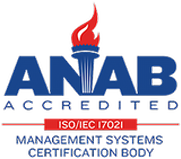Anodizing
What is Anodizing?
One of the most common techniques for protecting the surface of metals, anodizing is an electrolytic process in which an oxide (anodic) layer is chemically built on the surface of the metal.
This oxide layer acts as an insulator and provides surface corrosion protection and serves as an excellent substrate for decorative finishes. In the case of anodizing aluminum the anodic oxide structure originates from the aluminum substrate itself and is composed entirely of aluminum oxide. It has a highly ordered, porous structure that allows for secondary processes such as coloring and sealing.
- Anodizing is a “conversion coating” and is very different from paint, electroplating or other metal coatings. Anodize coatings are measured by thickness – the term thickness includes both penetration & build-up. While paints and plating sit on top of the surface of the aluminum, anodizing converts the outer layer of aluminum to aluminum oxide, so the coating is fully integrated with the aluminum substrate. This is the primary reason why anodize thickness is defined by the combination of the penetration into the substrate & the buildup of the oxide layer from the original dimension.
Types of Anodize Provided by AOTCO
Type I – Chromic Acid Anodizing
- Provides an oxide layer on aluminum for corrosion protection, electrical insulation, and improved dielectric strength
Type II – Sulfuric Acid Anodizing
- Improves surface corrosion protection under severe service conditions or as a base for paint systems
Type IIB – Thin Sulfuric Acid Anodizing
- Serves as a non-chromate alternative to Type I and IB coatings, where corrosion resistance, paint adhesion, and fatigue resistance are all required
Type III – Hardcoat Anodizing (Hard Anodic Coatings)
- Provides wear and abrasion resistant surfaces with improved corrosion protection due to greater thickness and weight than the conventional anodic coatings
Titanium Anodize - Type II
- Type II Titanium Anodizing is used as an anti-galling coating without additional lubrication or as a pretreatment for improving adherence of film lubricants and in application where increased resistance to galvanic corrosion is required
Benefits of Anodizing
- Very price competitive with painting and powder coating
- Durable, hard, abrasion resistant, and long lasting; coating does not peel or chip
- Excellent corrosion protection; withstands salt-spray and other tests extremely well
- Good electrical insulator; combined with other coatings can be used for selective masking of low-voltage cu.
- Environmentally-friendly; can be readily recycled. Inorganic chemicals used have minimal environmental impact.



